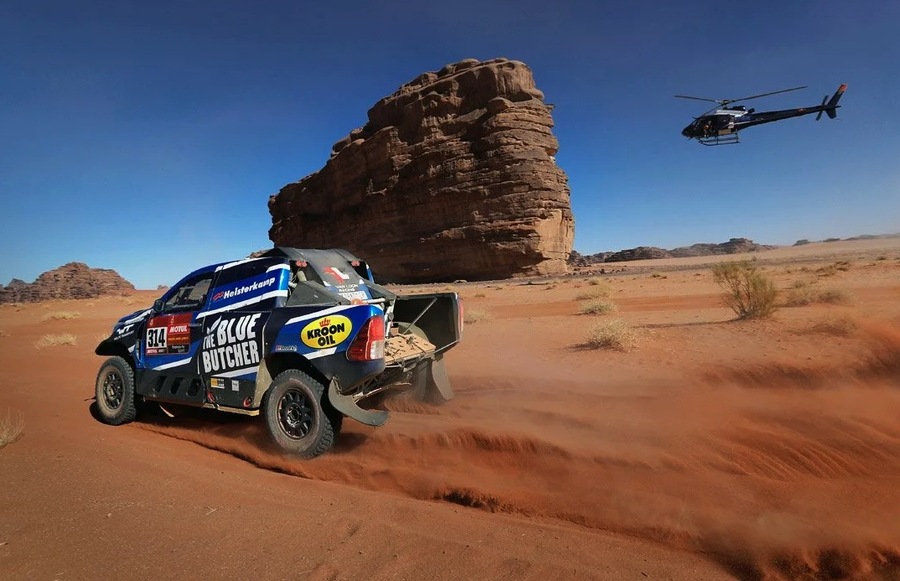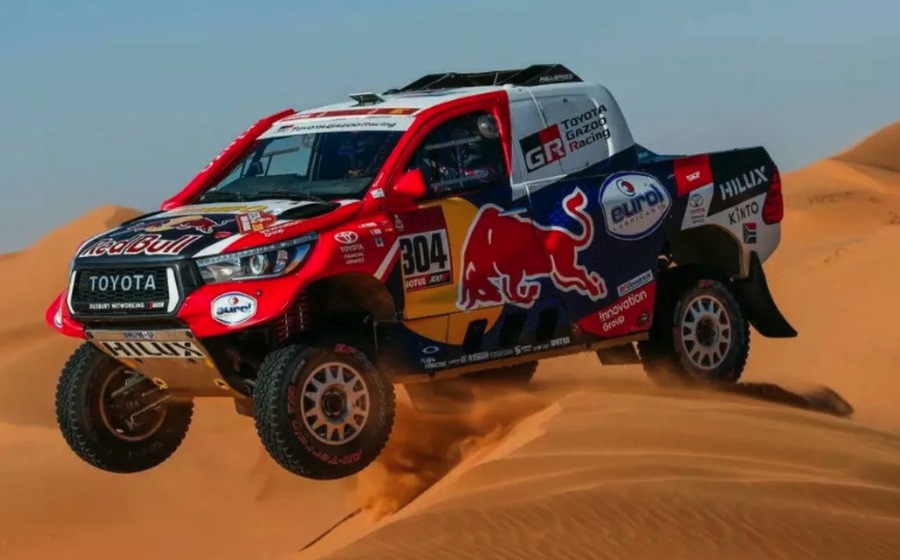The Dakar Rally: A Detailed Overview

The Dakar Rally is one of the most grueling and prestigious off-road endurance motorsport events in the world. It pushes both man and machine to their limits, testing their endurance, navigation skills, and mechanical resilience over thousands of kilometers of harsh terrain. Here’s a comprehensive look at the Dakar Rally, its history, structure, and significance.
What is the Dakar Rally?
The Dakar Rally, originally known as the Paris-Dakar Rally, is an annual rally raid organized by the Amaury Sport Organisation (ASO). It is open to both amateur and professional entries, making it a unique event that brings together a diverse range of competitors. The rally features a wide range of vehicle categories including motorcycles, cars, trucks, and quads, each presenting distinct challenges and requiring different skills and strategies. Unlike traditional rallies that follow established roads, the Dakar Rally is an off-road endurance event where the majority of the terrain traversed is far from regular roads, often consisting of uncharted desert landscapes, rocky trails, and sandy dunes. The rally is not just a test of speed, but also of navigation, endurance, and the ability to manage and repair vehicles under extreme conditions. Want to feel like a rally driver? Nothing easier – Dubai rent a car is the perfect solution!
History of the Dakar Rally
Early Influences and Precursors
The concept of multi-day rallies across Africa dates back to the early 20th century, capturing the imagination of adventurers and motorsport enthusiasts alike.
1930: The first major trans-African rally took place from the Mediterranean to Nigeria, setting the stage for future long-distance rallies. This early event showcased the potential for challenging rallies that traverse vast and difficult terrains.
1951: The Algiers-Cape Town Trans-African Marathon was organized, further popularizing the idea of long-distance off-road racing. This event demonstrated the feasibility of extensive off-road competitions across diverse African landscapes.
1974: The London-Sahara-Munich marathon occurred, adding another milestone in the history of transcontinental rally raids. The event highlighted the growing interest in and demand for extreme off-road motorsport events.
1973-1977: The Abidjan-Nice motor rally was held. During the 1977 race, a pivotal event occurred when French motorcycle racer Thierry Sabine got lost in the Libyan desert, south of the Tibesti Mountains. He was found three days later, thanks to race organizer Jean-Claude Bertrand spotting him from his plane. This harrowing experience inspired Sabine to create a more ambitious and adventurous rally, leading to the birth of the Paris-Dakar. His vision was to design a rally that tested the limits of endurance and navigation, set in some of the most challenging environments on earth.

The Birth and Evolution of the Dakar Rally
1978: The first Dakar Rally started on December 26 at the Trocadéro in Paris, with the route ending in Dakar, Senegal. This inaugural event quickly gained a reputation for being one of the most challenging motorsport events in the world. The rally covered approximately 10,000 kilometers, taking participants through France, Algeria, Niger, Mali, Upper Volta (now Burkina Faso), and Senegal.
1980: Winners were determined in three classes: motorcycles, cars, and trucks, adding a new dimension of competition. This categorization allowed for a more structured competition and recognized the distinct challenges faced by different types of vehicles.
1992: The route changed, ending in Cape Town, South Africa, instead of Dakar. This shift introduced new challenges and terrains, showcasing the rally’s adaptability and global reach.
2008: The rally was canceled due to security concerns in Mauritania, marking a turning point. This unprecedented cancellation highlighted the unpredictable and often dangerous nature of the rally.
2009: The event moved to South America, traversing Argentina and Chile. This shift brought new terrains, such as the Andes mountains and the Atacama Desert, providing fresh challenges and spectacular scenery.
2020: The Dakar Rally moved to Saudi Arabia, offering expansive deserts and diverse landscapes. This latest chapter in the rally’s history continues to push the boundaries of off-road motorsport, with the Arabian Peninsula’s vast deserts and rugged mountains providing a perfect backdrop for the rally’s demanding stages.
Structure of the Dakar Rally
Vehicle Categories
The Dakar Rally features three main categories of vehicles, each with its own unique challenges and requirements.
- Motorcycles: This category includes traditional motorcycles and quads. Riders in this category face the challenge of navigating vast and treacherous terrains on two wheels, often without the comfort and stability of a four-wheeled vehicle. Motorcyclists must possess exceptional riding skills, endurance, and the ability to make quick repairs in the field.
- Cars: This category includes both serial SUVs or pickups and specially prepared desert racing vehicles like buggies. Competitors in this category often rely on powerful, heavily modified vehicles designed to handle the harsh conditions of the rally. The car category is known for its intense competition and high speeds.
- Trucks: Heavy-duty trucks built to endure the most extreme conditions. These massive vehicles are capable of carrying substantial loads and are often equipped with powerful engines and reinforced suspensions. The truck category is a spectacle of sheer power and engineering, with competitors navigating some of the toughest terrains imaginable.
Rules and Regulations
Vehicle Registration: Each vehicle is registered according to its Vehicle Identification Number (VIN). Frame replacement and VIN changes are prohibited to ensure the integrity of the competition and to prevent any unfair advantages.
Vehicle Equipment: Essential equipment includes a GPS navigator, regional map, first aid kit, fire extinguisher, rope, repair tools, and extrication gear. These items are crucial for safety and self-sufficiency, as participants often find themselves in remote and hazardous locations.
Personal Protective Equipment: Motorcyclists must always wear an ECE 22.05-approved helmet, ensuring they have adequate protection in case of accidents. Safety gear is a critical component of the rally, given the high risk of injury.
Minimum Power Reserve: Cars and trucks must have a range of 600 km, motorcycles and quads 250 km, and buggies 350 km. This requirement ensures that vehicles can complete stages without running out of fuel, a vital consideration given the remote nature of the rally.
Navigation: Participants navigate using a “legend” provided the night before each stage, with GPS use resulting in disqualification. This system emphasizes traditional navigation skills and the ability to interpret maps and landmarks, adding to the rally’s challenge and authenticity.
Prominent Car Companies in the Dakar Rally
Several car manufacturers have left their mark on the Dakar Rally with numerous victories, showcasing their engineering prowess and commitment to motorsport.
Mitsubishi: Dominated the Dakar Rally with 12 wins, including a streak from 2001 to 2007. Mitsubishi’s Pajero model became synonymous with Dakar success, thanks to its durability and off-road capabilities.
Peugeot: Secured several victories, including back-to-back wins from 2016 to 2018. Peugeot’s specially designed rally cars, such as the 3008 DKR, demonstrated exceptional performance and reliability.
Volkswagen: Achieved consecutive wins from 2009 to 2011 with their Touareg model. Volkswagen’s success highlighted the effectiveness of their engineering and the skill of their drivers.
Mini: Has been a strong contender, with multiple wins since 2012. Mini’s All4 Racing cars have consistently performed well, combining speed and agility with the robustness needed for the Dakar Rally.

The Dakar Rally Experience: From Start to Finish
The Dakar Rally is divided into several stages, each presenting unique challenges and requiring different strategies:
- Prologue: A short opening stage to determine the starting order. This stage is crucial for setting the tone of the rally and establishing an early advantage.
- Marathon Stages: These stages test endurance with no external assistance allowed, emphasizing self-reliance and resourcefulness. Participants must rely on their skills and equipment to overcome challenges without external support.
- Regular Stages: Daily routes covering hundreds of kilometers, featuring a mix of dunes, mountains, and rocky terrain. These stages test a wide range of skills, from high-speed driving to technical navigation.
- Rest Day: A crucial break allowing teams to repair and recover. This day is vital for maintaining the health and performance of both participants and their vehicles.
- Final Stage: The concluding segment, culminating in the finish line where winners are celebrated. The final stage is a test of endurance and strategy, often determining the overall winners of the rally.
Popularity and Global Appeal
The Dakar Rally’s popularity stems from several factors:
Challenge and Adventure: It is a true test of human and mechanical endurance. The rally’s reputation for being one of the toughest motorsport events attracts competitors and fans who crave extreme challenges.
Diverse Landscapes: The rally offers breathtaking and varied scenery, from deserts to mountains. The stunning visuals and dramatic landscapes enhance the rally’s appeal and provide a captivating backdrop for the competition.
Global Participation: Competitors from around the world, including many amateurs, bring a unique international flavor. The rally’s inclusivity and the opportunity for amateurs to compete alongside professionals add to its allure.
Media Coverage: Extensive media coverage, including documentaries and live broadcasts, captures the drama and excitement. The rally’s high-profile coverage helps to build its global fan base and maintain its status as a premier motorsport event.
Conclusion
The Dakar Rally is particularly popular in the Middle East, where the harsh desert conditions resonate with local enthusiasts. Riders and drivers push themselves and their machines to the limit in these challenging environments, making it one of the most respected and watched motorsport events globally.
In conclusion, the Dakar Rally is not just a race; it is a testament to human spirit, ingenuity, and the relentless pursuit of adventure. Its rich history, rigorous structure, and global appeal ensure it remains a highlight in the motorsport calendar, drawing participants and fans from around the world who are eager to witness and be part of this extraordinary event.